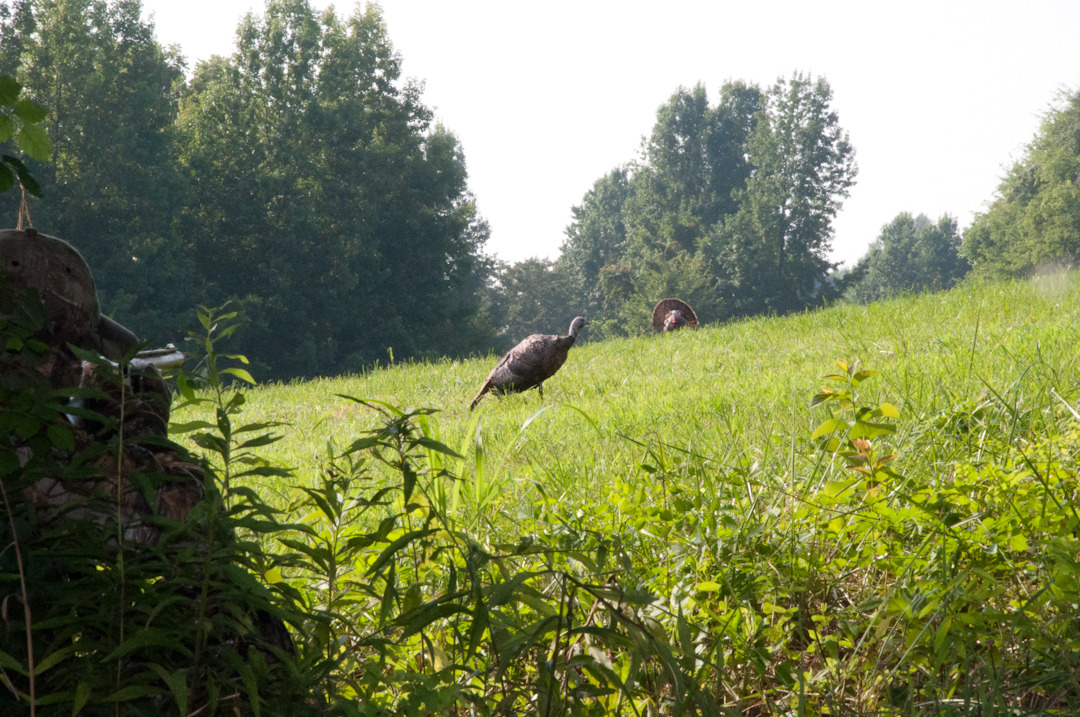Mar 15, 2017
THE RISE OF TOM TURKEY DECOYS
Organized turkey hunting began as a fall sport. Men found flocks, mastered tactics to bust them up and then called the birds back together. Somewhere along the way biologists intervened, realizing the importance of the wild turkey as a game animal by studying its breeding habits. And in that way, it became the spring pursuit that keeps some of the most experienced hunters awake at night.
Turkey Madness
Turkey are fickle birds. They do things that don’t make sense. Sometimes it’s to the advantage of the hunter, though most often not. Why is it that a hot gobbler, seeing your beautiful hen decoy standing alone and talking all pretty, would refuse to come closer for a little afternoon delight when it’s seems obvious that is what he’s looking for?
During the first several decades of what is a considerably new sport (as far as spring hunting goes), hunters thought within the box, only using a call and sometimes a hen decoy. In fact, the use of a decoy only became legal in some states in the last few years. Today, however, it’s gobbler-decoy madness everywhere we look.
While turkey do tend to be difficult birds, they’re still just that: birds. In the spring, the only things on their minds are loving and fighting. Their courtships, if you think about it, are somewhat similar to those of humans, whereas a man might bow up and strut around to try and impress a woman. That same guy might also hang back from time to time, trying to draw her over with winning looks. But throw an adversary into the mix and this fella might feel threatened to defend what he “believes” is rightfully his.
The Strut Zone
Gobblers pick a few sunny spots called strut zones where they like to while away the springtime hours. If there is no pressure and plenty of hens around, some have just one. Others might get pushed around by both turkeys and hunters. Either way, they pick their playing fields and reserve the sole right to play on them. When you’ve done some scouting and found a strut zone,the FANATIC and FANATIC XL tom turkey decoys can do wonders for your excitement level, causing your endorphins to soar at incredible heights when a big bird is flopping lifeless before you.
The FANATIC and its larger version (the XL) are 2D decoys that actually fold down to the size of a dinner plate. Sure beats the mount of a strutting gobbler we’d relied on once upon a time. A lightweight decoy that goes from a 10-inch disc to a life-size strutter in the blink of an eye is much, much easier to operate than a 25-pounder.
Hanging Up
Gobblers hang up. There’s going to come a time in every turkey hunter’s life when a tom, which, seconds earlier, was coming in on a rope, stops about 80 yards out and refuses to budge another inch. It’s inevitable. And damn frustrating. In other instances you may spot a gobbler or two out in the middle of a field carousing with hens. It’s very unlikely that these, too, will come to your calls. This is when the FANATIC becomes your closest ally.

The life-like size and photographic realism creates an appearance that’s sure to rile up any gobbler that sees it. Its light weight and stalking handle makes it easy to hold in one hand and while securing your gun in the other. With the attached stake of the FANATIC or the turkey foot reaping base of the XL, plant it or set it on the ground, respectively, for a quick setup. Just don’t forget to use the mesh window to see where you’re going. For the run-and-gun turkey hunter, your chances just got a little bit better.
Let the term spread stay associated with waterfowl decoys. One of the great aspects of turkey hunting is being allowed to travel light in order to move quietly. If you haven’t tried using a tom decoy, we guarantee that if employed correctly, it’ll increase the number of exciting encounters you’ll get to have with feisty gobblers this spring.
